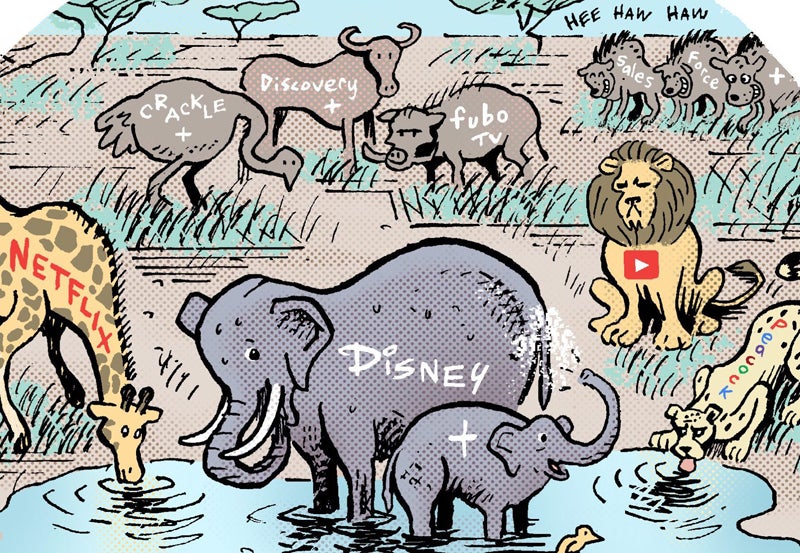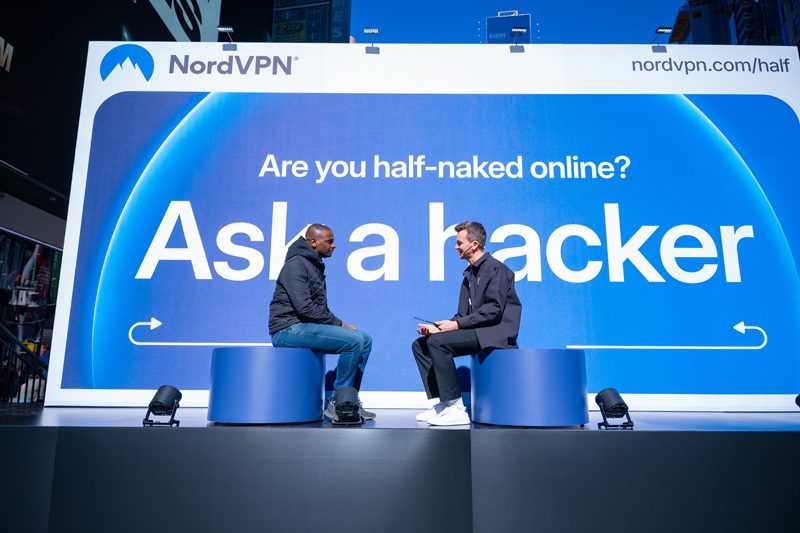U.S. marketers spent an estimated $152 billion on event marketing in 2003, up about 15% from the year before. Spending will rise another 15% to 20% in 2004, according to PROMO’s own Event Marketing survey (January PROMO).
Continued growth comes as event marketing evolves as one platform for branded entertainment, where marketers marry brand messages with entertainment content. Unilever taped sweeps winners at its grand-prize AXE House Party, then aired party footage on TV. “Traditional media was a much smaller component” of the street-team and national sweeps campaign, says Steve Groth, president of Radiate Group, whose New Berlin, WI-based GMR Marketing unit handled AXE’s campaign.
Events will spawn more content for TV (especially cable), print and Web sites. “Channels are looking for content in a big way,” Groth says.
Meanwhile, street-level marketing now has the patina of image ads as brand-building migrates further off-screen. Nissan Motor Co. displayed new-model cars in a glass case at high-traffic locales, and sent poet Sypher 1 on a national tour in an Altima: Her conversations with consumers about the car went on Nissan’s Web site and into radio spots via True Agency, Los Angeles.
“It’s living media — using experiential marketing to bring the ad to life,” says Brad Bryen, president of U.S. Concepts, New York City. “It’s a language ad people understand, and that helps bridge the disciplines.”
Branded entertainment could derail some event marketing, which first grew as the reach of mass media weakened. Will branded TV content — easier to control than live events — replace event marketing as brands’ preferred option to media advertising?
U.S. marketers earmarked an average of 10.6% of their total marketing dollars for events; event-marketing budgets averaged $827,911, per PROMO’s October 2003 survey of 305 marketing execs.
Spending hikes come mostly from a dedicated minority: Only 36% of marketers boosted event spending this year. About half (45%) kept budgets steady for 2004, and 8% cut event spending, per PROMO research.
Still, brands in all segments have adopted the discipline: About 72% of brands now sponsor events. (Sixty percent host their own, with 46% of those spending more in 2003.) Among sponsors, 45% did more events in 2003, but only 38% increased spending, per PROMO’s survey. (Nine percent cut 2004 event budgets.) It’s more evidence that face-to-face promotions keep siphoning funds from passive marketing, especially mass media ads.
The pendulum may swing back a little this year as networks and magazines further weave marketing into content, then bring their own brands into the street to plus-up ad buys with events. Game Show Network reprised its spring Get Schooled Games Tour with Bank of America as top sponsor. Mall and campus stops let consumers play games they’ve seen on the network; winners fly to Los Angeles for an on-air finale. Sponsors get visibility at tour stops and on-air; last year, sponsors got $9 million worth of visibility outside ad time.
Marketers’ top event-marketing goal is to boost sales, cited by 79% of PROMO survey respondents. Nearly as many (74%) use events to raise brand awareness, and 64% use it to capture market share.
A handful of marketers heavied up on events to build brand awareness. Toyota Motor Sales USA eschewed TV to launch entry-level sedan Scion with in-market events handled by San Francisco-based Attik, targeting young car buyers (March 2003 PROMO). Kellogg staged mock marathons run by commuters in business suits to launch Nutri-Grain Granola Bars and Bites; Relay Sports and Events Marketing, Chicago, handled the October races in eight cities. Intel Corp. staged a one-day awareness blitz for its Wi-Fi Internet service, giving free wireless access on Sept. 25 in thousands of restaurants, businesses and airports nationally and hosting concerts and events in six cities. GMR Marketing, New Berlin, WI, handled. Harrah’s Entertainment again sent sweepstakes finalists into the desert on a $20 million Treasure Hunt, a repeat of its 2001 event. Tracy Locke, Dallas, handled the March 2004 event.
Court TV’s Mobile Investigation Unit won the 2003 PRO Award for Best Use of Event Marketing More than Five Venues, via The Michael Alan Group, New York City. The National Football League’s Kickoff 2002 Live from Times Square won for Best Use of Event Marketing in Five or Less Venues. New York City-based NFL followed up that in-house effort with a 2003 Kickoff in Washington, DC’s Mall, with Coca-Cola as partner.
ROI becomes more than talk
Marketers have kvetched for at least three years about return on investment, but 2003 was the first year ROI measurement was planned into most event campaigns.
“In 2002, the rebound from Sept. 11, marketing dollars all had to be justified,” says Bryen. “ROI was talked about, but it wasn’t baked into all programs. Now it is.”
Most marketers (67%) prefer counting heads to determine event ROI, per PROMO’s survey. Nearly half (49%) track sales; a third (35%) count the number of samples or coupons distributed, and 28% use Web site hits to measure event ROI.
Marketers increasingly figure in impressions and recall — classic yardsticks for media advertising — to measure event success. That speaks to growing reliance on events to build brand equity.
Marketers say they get as strong a return from events as they do from media advertising and direct mail, according to George P. Johnson Co.’s June 2003 survey of 350 senior marketing execs. Half of respondents with strong ROI results (51%) boosted event spending; only 33% of all respondents increased spending. Far fewer were in want of measurement tools in 2003 (35%) than in 2002 (53%), Johnson reports.
As for consumers, 85% of women and 69% of men like getting face-to-face with brands, per IMI International, Toronto. Plus, 84% of consumers 35-39; 77% of those 25-34; and and 76% of consumers 13-24 like marketing events, per IMI’s PromoTrack survey.
Among agencies, Draft parent Interpublic Group of Cos. spun off its event arm, Group III Promotions, and its premiums division, Premium Surge, in early 2004. Former Draft exec Kevin Berg heads both; Group III was renamed Legacy Marketing Partners.
MARS Advertising, Southfield, MI, formed MARS Event Marketing Group, tapping Pierce Promotions & Events veteran Steve Woods as president and MARS veteran Cheryl Larson as senior VP-general manager.
SNAPSHOT 2003
- Total spending: $152 billion (up 15% for year)
- 72% of brands sponsor events; 60% host their own
- Brands earmark an average 10.6% of total budgets for events
- Branded entertainment takes on-the-street onto the screen









